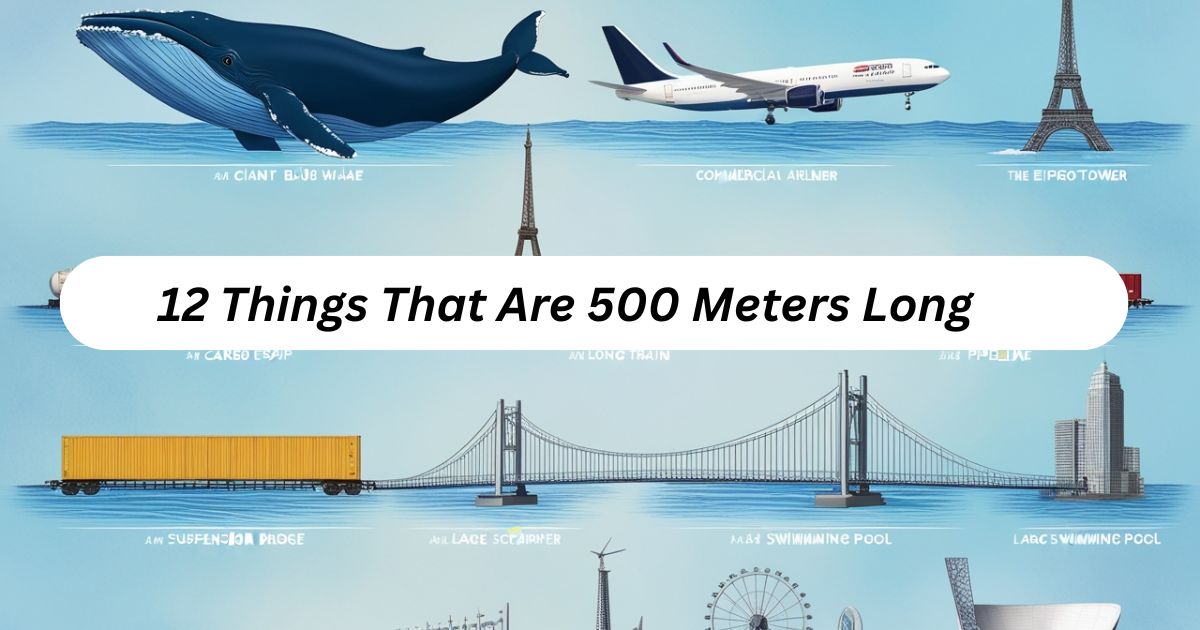Understanding the true scale of 500 meters can be challenging without proper reference points. This comprehensive guide explores remarkable structures and landmarks that help visualize this impressive measurement, making the concept of half a kilometer or 1,640 feet more tangible and meaningful.
What Does 500 Meters Look Like: Understanding This Massive Distance
Visualizing 500 meters becomes significantly easier when compared to familiar structures and everyday experiences. The distance visualization examples provided throughout this guide demonstrate how this measurement appears in our built environment through both horizontal and vertical perspectives.
Walking distance of 500 meters typically requires approximately 5-7 minutes at a comfortable pace of 5 kilometers per hour. This translates to roughly 1.4 meters per second, making it a distance most individuals encounter regularly during daily activities. The practical measurement examples help ground this abstract number in real-world experiences.
For sports enthusiasts, 500 meters comparison can be understood as circling a standard athletic track five complete times. Football fans can visualize four NFL fields placed end-to-end with additional space remaining. These familiar references transform numerical measurements into comprehensible spatial concepts.
Taipei 101: 500 Meter Skyscraper Marvel in Taiwan
Taipei 101 stands as one of the most precise examples for understanding 500 meters visualized. Located in Taiwan, this architectural masterpiece reaches 508 meters into the sky, slightly exceeding our target measurement. The structure held the distinguished title of world’s tallest building from 2004 to 2010.
The engineering excellence of Taipei 101 includes an innovative tuned mass damper system that stabilizes the structure against strong winds and seismic activity. This 500 meter building example demonstrates how modern architecture achieves both impressive height and structural integrity. The building’s distinctive design has become synonymous with Taiwan’s economic growth and technological advancement.
Marina Bay Sands Singapore: 500 Meter Singapore Architectural Wonder
Marina Bay Sands Singapore presents a unique horizontal perspective on 500 meters. The integrated resort complex spans approximately 490 meters across its three interconnected towers and iconic SkyPark. While not exactly reaching our target measurement, this Singapore landmark provides an excellent reference for understanding how long is 500 meters in horizontal terms.
The architectural innovation of Marina Bay Sands extends beyond mere measurements. The structure’s infinity pool and observation deck offer visitors practical experience with massive scale construction. This landmark in Singapore demonstrates how 500 meter scale in real life appears in contemporary urban development projects.
Singapore Flyer Height Tripled: Reaching 500 Meters Skyward
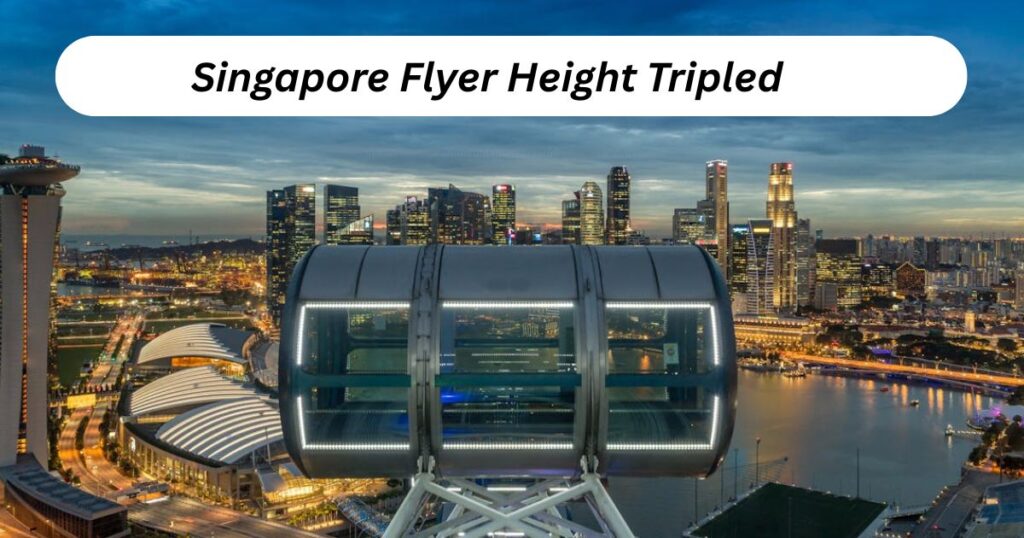
The Singapore Flyer observation wheel stands 165 meters tall, providing breathtaking panoramic views across the city-state. When this height is multiplied by three, the result reaches 495 meters, remarkably close to our 500 meters target measurement. This calculation method offers an engaging approach to understanding 500 meters through mathematical visualization.
The engineering marvel of the Singapore Flyer helps demonstrate vertical distances in an accessible manner. Visitors experiencing this attraction gain firsthand appreciation for significant heights, making the concept of what does 500 meters look like more tangible through direct observation and experience.
Eiffel Tower Times 1.5: Classic 500 Meter Comparison
Paris’s beloved Eiffel Tower, constructed in 1889, reaches 324 meters into the sky. Multiplying this iconic height by 1.5x yields 486 meters, providing an excellent approximation for 500 meters comparison. The tower’s intricate iron lattice design and historical significance make it a perfect reference point for visualizing distance examples.
The Eiffel Tower serves as a globally recognized benchmark for monumental heights. Its familiar silhouette helps individuals worldwide understand the scale of 500 meters through cultural and architectural context. This engineering marvel demonstrates how historical structures continue to provide valuable measurement references in contemporary discussions.
Willis Tower Chicago: America’s 500 Meter Height Benchmark
Chicago’s Willis Tower, formerly known as the Sears Tower, stands 442 meters tall, providing an excellent American reference point for understanding 500 meters. This architectural marvel dominated the skyline for decades and continues to serve as a significant measurement benchmark for tall buildings compared throughout the United States.
The observation deck of Willis Tower offers visitors direct experience with heights approaching our target measurement. This skyscraper demonstrates how buildings over 500 meters create dramatic urban landscapes while serving practical commercial and observation purposes. The structure exemplifies American architectural achievement in high-rise construction.
Canton Tower Guangzhou: Modern 500 Meter Communication Giant
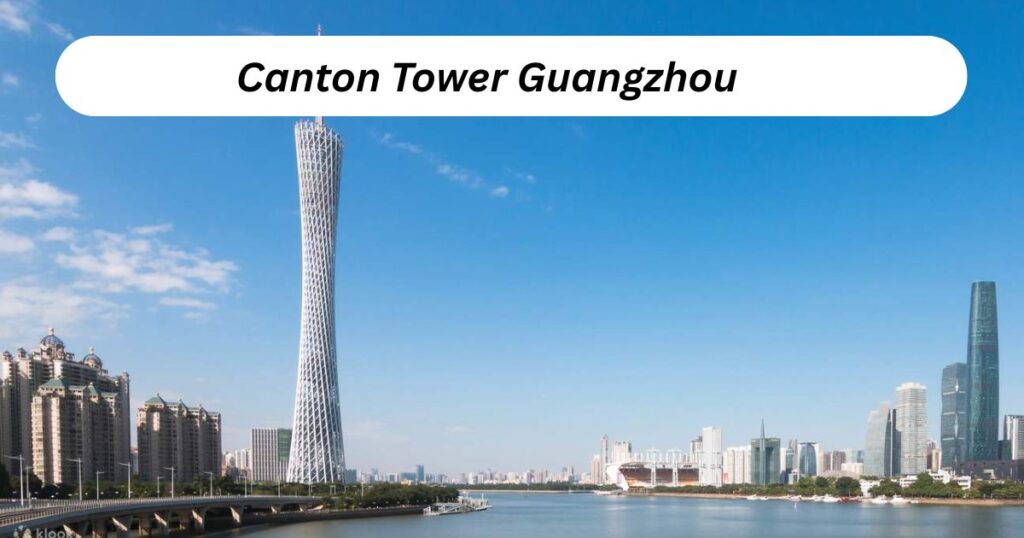
Guangzhou’s Canton Tower reaches 600 meters, exceeding our target measurement and providing an excellent reference point for understanding 500 meters. This communications and observation tower showcases modern architectural capabilities while serving practical broadcasting purposes throughout China.
The Canton Tower represents contemporary engineering excellence in tallest towers in the world category. Its sleek design and multifunctional purpose demonstrate how structures exceeding 500 meter scale contribute to urban infrastructure while creating distinctive skyline landmarks. This architectural landmark height exemplifies modern Chinese construction capabilities.
The Shard London Multiplied: British 500 Meter Reference Point
London’s The Shard, designed by renowned architect Renzo Piano, rises 310 meters above the city. Multiplying this height by 1.6x brings the total to 496 meters, demonstrating how this modern marvel helps conceptualize our target measurement. The building’s mixed-use design exemplifies contemporary urban development principles.
The Shard provides an excellent European reference for 500 meters visualized. Its distinctive pyramidal shape and glass facade create a recognizable silhouette that helps individuals understand the scale of tall buildings compared across different continents. This London landmark bridges historical architecture with modern construction techniques.
Washington Monument Triple Height: American 500 Meter Landmark
Standing 169 meters tall, the Washington Monument serves as America’s tribute to its first president. Tripling this height yields 507 meters, slightly exceeding our target measurement. This obelisk’s clean lines and historical significance make it an excellent reference point for Americans seeking to understand 500 meters.
The Washington Monument provides a uniquely American perspective on monumental scale. Its marble construction and symbolic importance help contextualize 500 meters within the framework of national landmarks and historical architecture. This Washington structure demonstrates how classical design principles achieve impressive vertical dimensions.
Golden Gate Bridge Doubled: California’s 500 Meter Scale Model
The Golden Gate Bridge spans the majestic San Francisco Bay with main towers reaching 227 meters above the water. Doubling this height provides a close approximation of 500 meters. The bridge’s total structure contains an astounding 80,000 miles of wire, demonstrating the scale of human engineering achievement.
This iconic San Francisco landmark helps visualize 500 meters through both vertical and horizontal perspectives. The Golden Gate Bridge serves as a familiar reference point for understanding massive construction projects and their relationship to natural landscapes. The structure exemplifies how engineering marvels over 500 meters integrate functionality with aesthetic beauty.
CN Tower Toronto: Canada’s 500 Meter Measurement Standard
Toronto’s CN Tower stands 553 meters tall, offering precise comparison for understanding 500 meters. This communications and tourism hub has defined the city’s skyline since 1976, making it an excellent reference point for height of CN Tower discussions and architectural scale comparisons.
The CN Tower represents Canadian engineering excellence and serves as a practical measurement benchmark throughout North America. Its distinctive design and multifunctional purpose demonstrate how structures exceeding 500 meter building examples serve both practical and symbolic roles in urban development. This Toronto landmark provides visitors with direct experience of extreme vertical heights.
Eureka Tower Melbourne: Australian 500 Meter Building Comparison
Melbourne’s Eureka Tower reaches 297 meters, and multiplying this height by 1.7 yields 505 meters, providing another useful benchmark that slightly exceeds our target. As Australia’s second-tallest building, it helps demonstrate how 500 meters compares to modern residential architecture in the Southern Hemisphere.
The Eureka Tower offers a unique perspective on tallest buildings in Asia-Pacific region comparisons. Its residential focus distinguishes it from primarily commercial or communication towers, demonstrating diverse applications for buildings over 500 meters. This Melbourne structure showcases how extreme heights accommodate urban housing needs.
Shanghai World Financial Center: China’s 500 Meter Architectural Achievement
At 492 meters, the Shanghai World Financial Center nearly matches our target measurement perfectly. Its distinctive design features a trapezoid aperture at its peak, creating a recognizable silhouette that has become symbolic of China’s economic prowess and architectural innovation within global construction markets.
This Shanghai skyscraper represents the pinnacle of 500 meter scale in real life applications. The structure’s mixed-use design incorporates offices, hotels, observation decks, and retail spaces, demonstrating how tall buildings compared serve multiple urban functions simultaneously. The Shanghai World Financial Center height exemplifies modern Chinese architectural achievement.
How Far Is 500 Meters: Walking Distance and Time Calculations
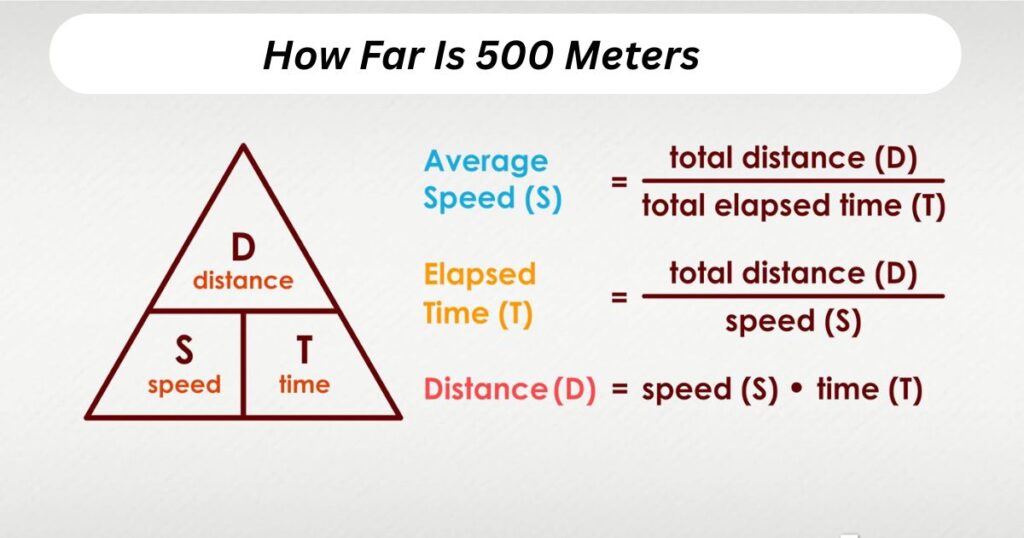
How far is 500 meters to walk depends on individual pace and environmental conditions. Most adults cover this distance in approximately 5-7 minutes at a standard walking speed. The 500m walking time can vary significantly based on factors such as terrain, weather conditions, and personal fitness levels.
For athletic activities, how far is 500 meters to run represents a middle-distance sprint that challenges both speed and endurance. Professional athletes complete this distance in under two minutes, while recreational runners typically require three to five minutes. The jogging distance examples demonstrate how 500 meters fits within various fitness training programs.
Understanding daily walking distance average helps contextualize 500 meters within routine activities. Many individuals cover this distance multiple times daily while navigating shopping centers, parking lots, or urban environments. The short walking distance represents approximately one-tenth of a typical city block in major metropolitan areas.
500 Meter Structures: Impact on Modern Urban Development
Buildings over 500 meters significantly influence urban planning and development strategies worldwide. These engineering marvels over 500 meters require sophisticated infrastructure support including elevator systems, utilities, and emergency services coordination. The tallest buildings in Asia demonstrate how vertical construction addresses land scarcity in densely populated regions.
Modern skyscrapers in China exemplify how 500 meter building examples contribute to economic development and international recognition. These structures attract tourism, business investment, and architectural innovation while serving practical space utilization needs. The architectural landmarks heights create distinctive city skylines that enhance cultural identity and geographic recognition.
The environmental impact of tall buildings compared includes wind pattern alterations, shadow effects, and energy consumption considerations. Urban planners must balance the benefits of vertical development against infrastructure requirements and community impacts when approving buildings over 500 meters.
Visualizing 500 Meters: Practical Examples for Everyday Understanding
Real life length comparisons help translate abstract measurements into comprehensible concepts. The perspective on long distances changes dramatically when experienced through walking, driving, or observing from elevated positions. These metric distance examples provide multiple approaches to understanding scale and proportion.
Scale of measurement becomes more meaningful when connected to familiar activities and locations. The practical measurement examples throughout this guide demonstrate how 500 meters appears in various contexts, from architectural achievements to recreational activities. Understanding these comparisons enhances spatial reasoning and measurement comprehension.
How Long Does Walking 500 Meters Take: Complete Time Guide
Walking pace vs distance calculations reveal that 500 meters requires different timeframes based on individual circumstances. Leisurely strolling might extend the journey to 8-10 minutes, while brisk walking reduces the time to 3-4 minutes. These variations demonstrate how personal factors influence distance visualization examples.
The 500m walking time provides practical information for urban navigation and fitness planning. Understanding these timeframes helps individuals estimate travel duration for short-distance journeys and incorporate walking into daily schedules. The calculations support both practical transportation needs and recreational activity planning.
500 Meters in Sports: Athletic Track and Field Comparisons
Athletic tracks provide the most precise reference for understanding 500 meters through standardized measurements. Five complete circuits of a standard 100-meter track equals exactly 500 meters, making this comparison particularly valuable for sports enthusiasts and fitness participants.
The 500 meters distance appears in various competitive events including swimming, rowing, and track cycling. These sporting contexts help athletes and spectators develop intuitive understanding of the measurement through direct participation and observation. The athletic applications demonstrate practical uses for 500 meter scale understanding.
Famous Buildings 500 Meters Tall: Global Architecture Examples
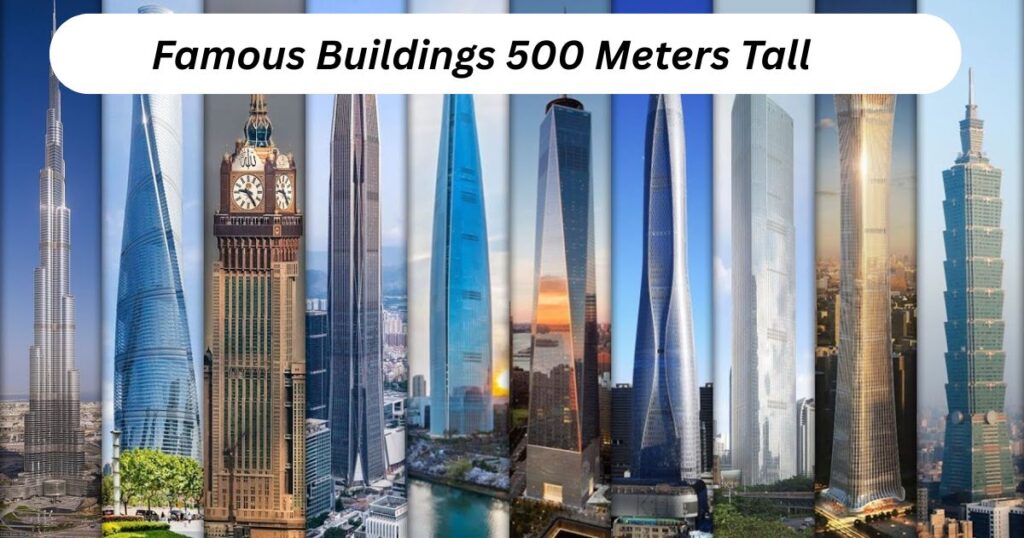
The collection of famous skyscrapers 500 meters tall represents pinnacles of architectural and engineering achievement across multiple continents. These structures demonstrate diverse approaches to extreme height construction while serving various functional purposes from communication to mixed-use development.
How tall is Taipei 101 and similar queries reflect public interest in understanding these monumental achievements. The global distribution of tallest towers in the world showcases different cultural approaches to vertical construction and urban development priorities.
Understanding 500 Meter Scale: Key Takeaways for Size Visualization
The exploration of 12 things that are 500 meters long reveals the remarkable diversity of human construction achievements at this impressive scale. From historic monuments like the Eiffel Tower to modern marvels such as Taipei 101, these structures provide tangible references for understanding significant distances and heights.
How long is 500 meters becomes clear through multiple comparison methods including walking time, architectural examples, and mathematical relationships with familiar landmarks. The 500 meters in feet equivalent of 1,640 feet helps bridge metric and imperial measurement systems for broader accessibility.
The practical applications of 500 meter understanding extend beyond academic curiosity to include urban planning, athletic training, and architectural appreciation. These real life length comparisons enhance spatial reasoning skills while providing cultural and historical context for human achievement in construction and engineering.
Modern urban development increasingly incorporates structures approaching or exceeding 500 meters, demonstrating humanity’s expanding architectural capabilities.
These megastructures serve multiple purposes while becoming defining elements of city skylines and cultural identity. The continued evolution of tall buildings compared reflects advancing engineering techniques and changing urban space utilization needs.
